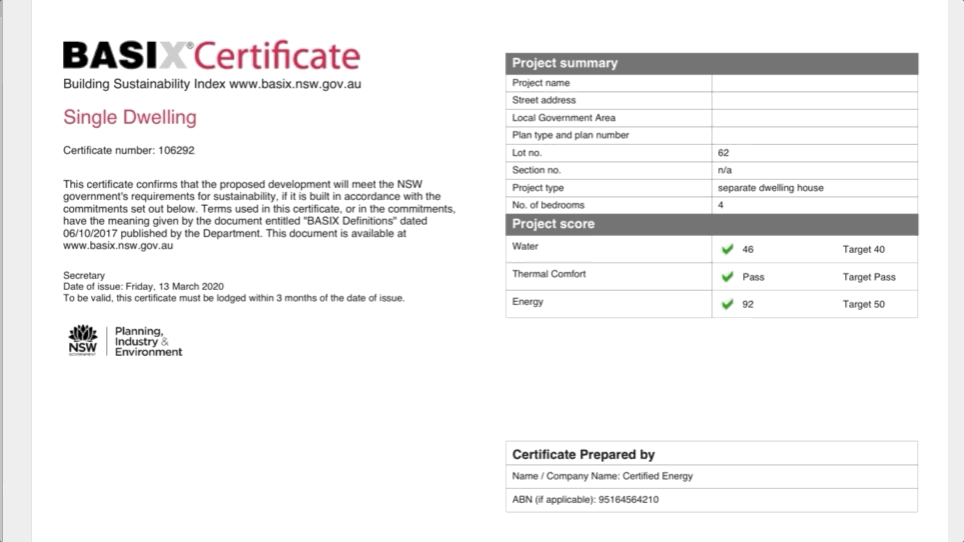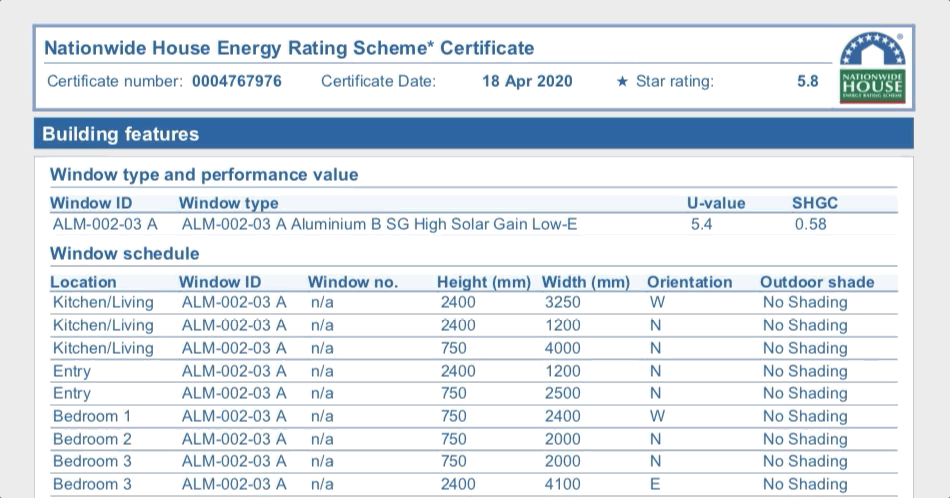4 min read
How the DA process works in NSW | From Pre-DA to Finish
Prior to commencing most types of developments in NSW, you will have to lodge a Development Application (DA) with your...

"With 17+ Years of experience in ESD Consulting, you will be well served by our qualified and personally selected in house specialist BASIX Certifiers. Please reach out, we would love to work with you on your next important project."
Director, Certified Energy
| Expanded flexibility in meeting BASIX requirements |
| The BASIX tool will have increased integration of innovations in technology |
| Stronger alignment in a number of BASIX requirements that will apply in other jurisdictions |
| Reduction of alternative assessment for secondary dwellings which will result in an improved user experience |
| Ceiling fans permitted to be modelled in both Thermal comfort which will align with other states, and the Energy section. |
| Recognition of the Passive House standard as a pathway to meet the BASIX Thermal Comfort Requirement. |
| An alignment with the NatHERS requirement and the BASIX Thermal Comfort Modelling Requirements for walls and doors adjacent to common areas in apartment buildings. |
| Additional options for lifts through the use of regenerative drives will be recognised. |
| Better efficiency for options in variable refrigerant volume heating and cooling systems. |
| Potential for the need of external sharing through increased options for high performance windows. |
For the first time in a long time, the NSW Government has incorporated changes to the BASIX legislation in NSW which improves the workflow and efficiency of Assessors while at the same time offering real world cost savings to clients by allowing a more accurate thermal model to be generated.
This common sense approach has been welcomed by the Energy Efficiency community more broadly and by its accredited organisation members who conduct these ratings.
The biggest change is the approved alternative pathway by using Passive House modelling which focuses more on air movement and air pressure loss in addition to thermal efficiency. There has been a relatively slow uptake by industry in Australia in utilising mechanical ventilation for residential properties, so I would expect to see this feature utilised more over the next NCC cycle starting in 2022 as we ever slowly move towards net zero new home construction.
The most practical change has been with the incorporation of ceiling fans into the NatHERS model which has been commonplace for other jurisdictions around Australia. This allows for the thermal model to offset the Cooling energy loads and will ultimately lead to more Architecturally designed dwellings not requiring expensive and heavy double glazed sliding doors, and may even allow for some projects to pass without double glazing.
Overall I expect these changes will increase the efficiency of assessors while providing a more accurate Thermal Model or Passive House model to better assess the thermal capability of the building fabric and will result in more cost effective service delivery to Energy Efficiency compliance in NSW while allowing assessors perhaps just that extra bit of time per project to optimise the thermal model resulting in lower construction costs for clients.




Helping you make smart ESD decisions for your project - saving you time and money on the following types of projects:
.png)
Strap a rocket to your ESD Consultant's back
with this must have BASIX Checklist.

Green, red, and once even bright pink, we have worked on projects from all walks of life in every State and Territory around Australia. Certified Energy has a portfolio of over 5000 BASIX projects, with each a bit of energy saved and a positive environmental outcome for us all.

Everything you need to know about obtaining a BASIX Certificate for your project is now compiled in our BASIX Bible resource.
Volume I:
|
Volume II:
|
BASIX Benchmarks:
To determine water and energy targets, the average benchmark for per person consumption of potable water and greenhouse gas emissions within the NSW residential sector is calculated.

BASIX Targets:
The performance targets set by the NSW Government include:
The BASIX certificate benchmarks of water and energy are both measured on a per capita basis, including:
BASIX (The Building Sustainability Index) was introduced as part of the NSW Government’s 2004 initiative to ‘encourage sustainable residential development’ and is in effect part of the Environmental Planning and Assessment Act. The BASIX certificate aims to accommodate NSW with more resilient dwellings together with reducing greenhouse gases and water consumption.
BASIX was established to meet targets of up to 40% reductions in water consumption as well as greenhouse gas reductions by up to 25%. As a result, this delivers financial savings for the home owner.
A BASIX certificate assessment is required for the development application process in NSW and considers various criteria, such as:
Additionally, it also considers thermal comfort levels which lessens the amount of energy used by dwellings in order to heat or cool the house to a comfortable level.
As well as contributing to a sustainable future of urban planning, you as the homeowner will also financially benefit through reduced water and energy bills. Your BASIX certificate will confirm that your proposed project will abide by the NSW Government’s sustainability targets since obtaining a BASIX certificate means your residential building will have passed the government’s environmental targets.
To assess the BASIX certificate, you can use the online Assessment Tool which will determine the sustainability of your development application. The assessment tool analyses data of the proposed dwelling’s design against the NSW Government’s water and energy targets. A BASIX certificate is issued upon meeting the BASIX target requirements and paying a fee.
For BASIX pricing, click here
The development application stage of every new residential dwelling built in NSW of $50,000 or more require a BASIX certificate. Residential dwellings include:
Additionally, alterations and add-ons to existing dwellings which cost greater than $50,000 also require a BASIX certificate.
There are various circumstances where BASIX fails to meet the thermal modelling capabilities of NatHERS. BASIX specifies each component of a house individually, whereas NatHERS does not. This makes using BASIX alone difficult as the ‘rapid method’ of assessment jumps to solutions such as expensive windows or shading devices, impacting costs and aesthetics. For example, BASIX may specify higher performance glazing such as double glazing, however, NatHERS has the ability to compensate elsewhere, for example increasing the insulation to avoid the expense of high performing windows. This makes the use of both BASIX and NatHERS much more cost effective in terms of construction as well as continual energy expenses.
Continue reading
Prior to commencing most types of developments in NSW, you will have to lodge a Development Application (DA) with your...
Building for the Australian Climate.
A building’s access to sunlight is one of the leading factors contributing to its...
Let's start with the Basics of the BASIX Requirements, and when you need a BASIX Certificate.
In this article, we’re...
FOR IMMEDIATE RELEASE
Sydney, 11 March 2025
Certified Energy is pleased to announce our...